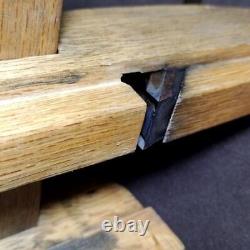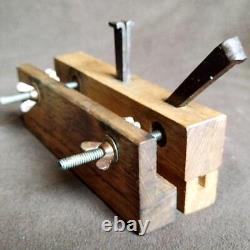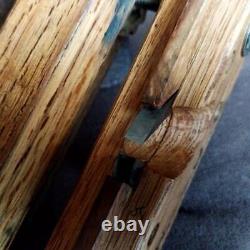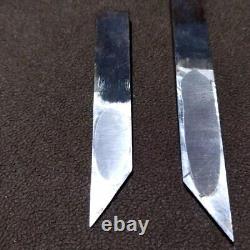Japanese antiques Carpentry Tools Vintage Wood plane 3 set



















Please be sure to read. At the bottom of this list before purchasing.
Although these old planes are seen from time to time, most of them have rusted blades that cannot be removed. This one has been cleaned of rust, sharpened to a certain degree, and oiled. We have put together three items that we would like to have on hand for those who love old tools. This is used to make shikii and kamoi grooves that sliding doors such as fusuma (sliding doors) and shoji (paper sliding doors) poke up and down in order to get stuck and move.
The groove location can be changed by moving the ruler. Some rulers are fixed with screws, but this one is fixed with a wedge.
The blade has a reverse cutting edge to cut the wood fibers so that they do not form, and a needle blade to cut the width of the groove. The two needle blades are connected by a shaft for sharpening, but the angle can be moved. This plane also digs grooves, but many of them are narrower than the Kiichi shakuri planer mentioned above. For this reason, this one does not have a back edge on the blade.
On the other hand, this one has a mechanism that allows the ruler to be firmly fixed with screws. A groove like this is called poke a small hole. The sheath is made of cypress to protect the blade. This planer is used to finish the sides of the grooves scooped by the Motoichi Shakuri Planer. Nowadays, the work of shucking the grooves of the previous two planes is usually done with electric tools such as routers and trimmers, or with machine tools such as elevating machines. However, finishing the sides may still be done. You see the branding of the name stamped on the top edge of the planer stand. We keep serial numbers and images of evidence to prevent substitution. We keep video evidence and photos after packing even before packing. We have even been able to apprehend criminals based on this information. We also have a repertoire of various other products. International Buyers - Please Note.
